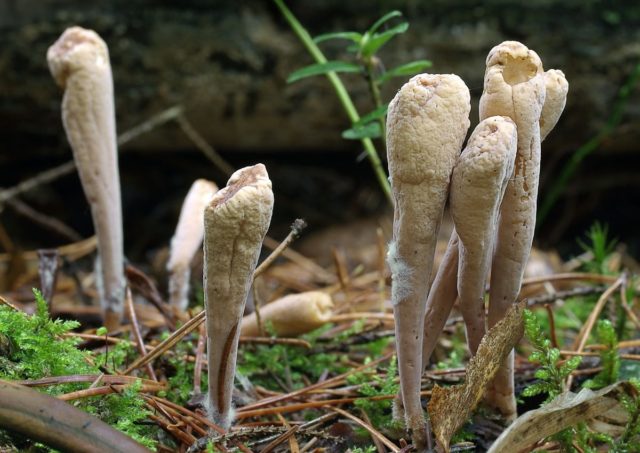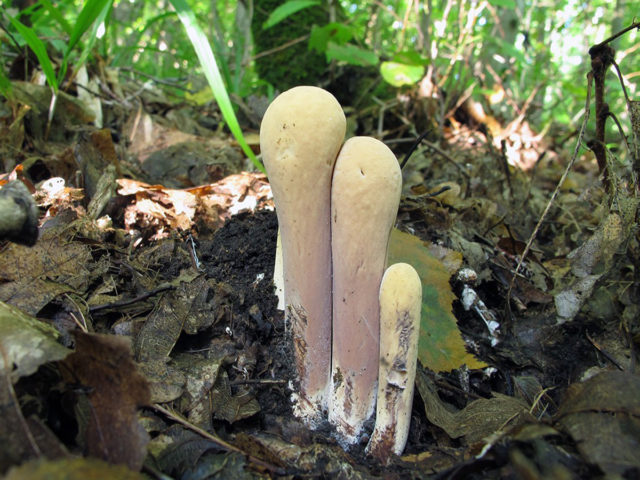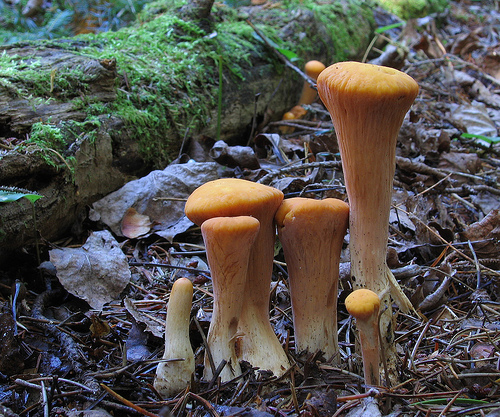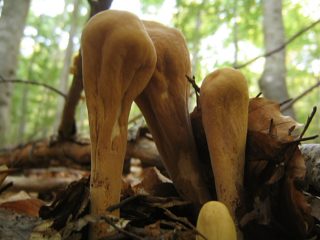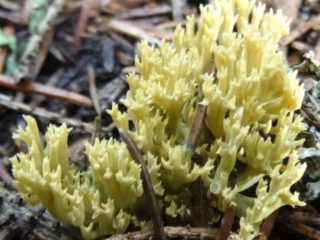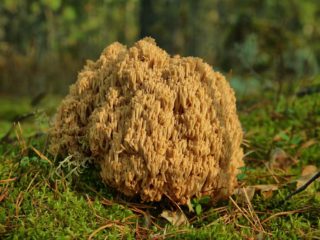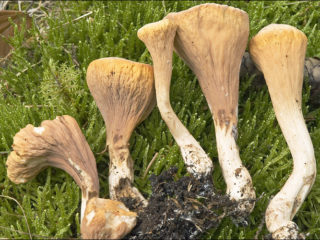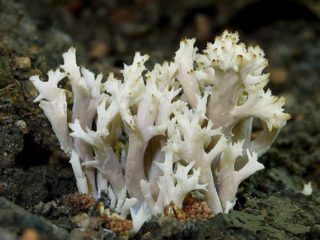Content
Clavariadelphus ligula (Clavariadelphus ligula) or reed horn is a mushroom of the Clavariadelph family. The species is also known under several names: club or tongue back. In terms of nutritional value, the slingshot belongs to the latter category.
Where do reed horns grow
The distribution area of the reed hornbeam in all forests, where the dominant tree species are pine and spruce, regardless of the climatic zone. Mushrooms are widespread throughout the European part, in the forests of the Leningrad region they grow in large groups, sometimes numbering up to 100 fruiting bodies, but such localization places are rare.
They grow on a coniferous litter covering the remains of wood, a prerequisite is the presence of moss, with which they enter into symbiosis. You can find slingshots on the edges near tree trunks, stumps or branches. The fruiting time of claviadelfus is the end of July. The last specimens in warmer climates are found even in October. The peak of fruiting occurs in mid-September.
What do reed horns look like?
Bulavitsa has a rather unusual appearance, unusual for mushrooms. Fruit body without stem and cap.
In shape, the horns resemble a language, hence the specific name. The external characteristics of the fruiting body are as follows:
- height - from 8 to 12 cm;
- the upper part is rounded or slightly flat, the diameter is 1.5-3 cm;
- the lower part is very narrow, with a thin felt covering;
- the surface of young mushrooms is smooth, after two days small, chaotically formed wrinkles appear;
- the color is light yellow or beige, as it grows it becomes darker, acquires an orange tint;
- the surface is dry, with spores located throughout the fruiting body;
- the structure is hollow, spongy.
The pulp is elastic at the beginning of growth, dry and brittle in mature specimens. White, with a slight bitter taste and no odor.
Is it possible to eat reed horns
The reed horn is not classified as a poisonous species, in its chemical composition there are no compounds toxic to humans. In the classification by nutritional value, it is included in the fourth - last group. The species is not in demand due to its small fruiting body and thin pulp. Bulavitsa are not harvested in large quantities.
Taste qualities of the reed horned mushroom
There are specimens with a weak and slightly sweetish taste, but more often mushrooms are bitter. Because of this, the nutritional value is low, you can get rid of the unpleasant taste by soaking and boiling. After processing, the slingshot can be fried or included in salads. Braising with vegetables in sour cream is possible. For winter harvesting, the species is not processed. Claviadelfus is also not suitable for making soup. Fruit bodies after decoction become tasteless and rubbery in structure.
False doubles
Species similar to the reed horn include the pistil horn.
The views are very similar in appearance. The twin is distinguished by a light lilac coloration of the lower part, longitudinal wrinkles on the surface.When broken, the pulp becomes brown rather than purple. Distributed in the southern part of Russia, found in deciduous forests, grows in a large colony on rotten leaf litter. The structure is spongy, with a weak taste, lack of bitterness and odor. The species is referred to the 4th group in terms of nutritional value.
Outwardly, it is similar to claviadelfus reed and truncated horn.
The fruit body of the twin is larger, with a flat wrinkled surface. The color is uneven: the clavate top is orange, the lower part is light gray with a fine thick pile. The structure is whole, spongy, the flesh is white, sweetish. In terms of nutritional value, the truncated slingshot belongs to the 4th category. Grows in groups near firs, rarely found in Russia.
Collection rules
I pick mushrooms at the end of summer near conifers on a moss mat. They do not consider places in areas with poor ecology. Fruit bodies accumulate heavy metals and substances toxic to humans near industrial enterprises, highways or landfills, after consumption, such a product can cause intoxication. Do not take old overripe specimens.
Use
In addition to gastronomic use, clavariadelphus reed has become a source of polysaccharides, which are used to arrest the growth of breast cancer cells. The fruiting body contains chemicals that are natural antibiotics.
Conclusion
The reed horn is a rare mushroom with an unusual appearance. The fruiting body lacks a clear border between the cap and the stem. A species with a low gastronomic rating, conditionally edible. Some of the substances in the chemical composition are used for medical purposes for the treatment of oncological neoplasms.
